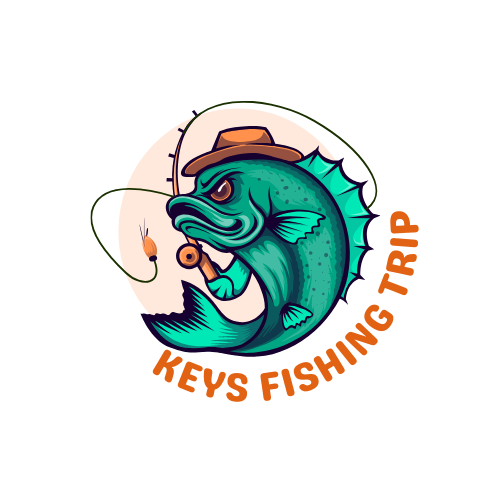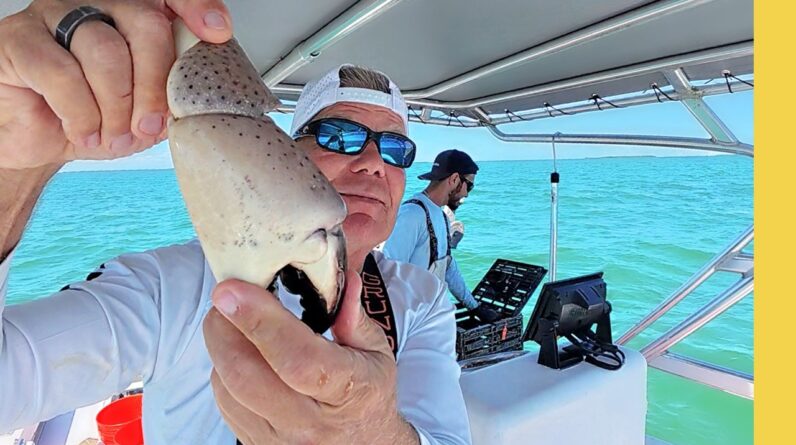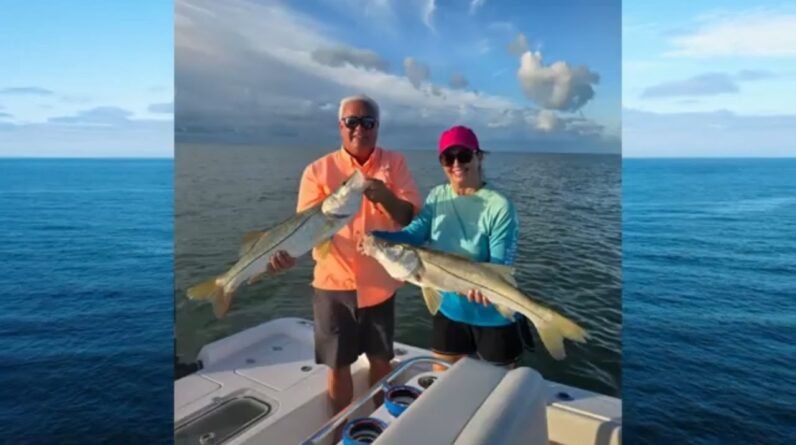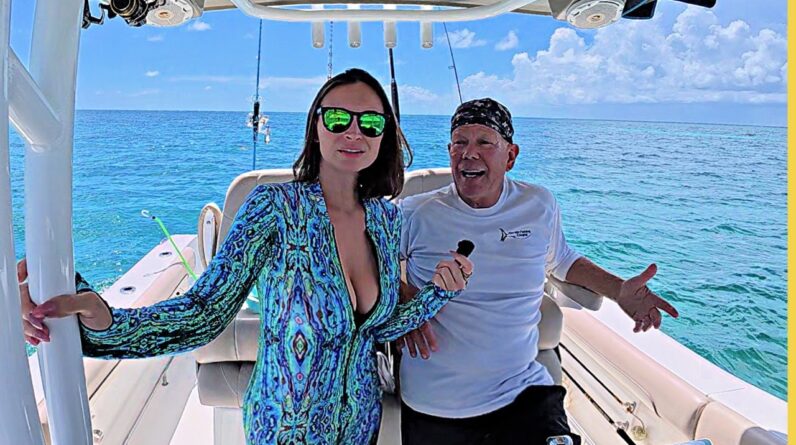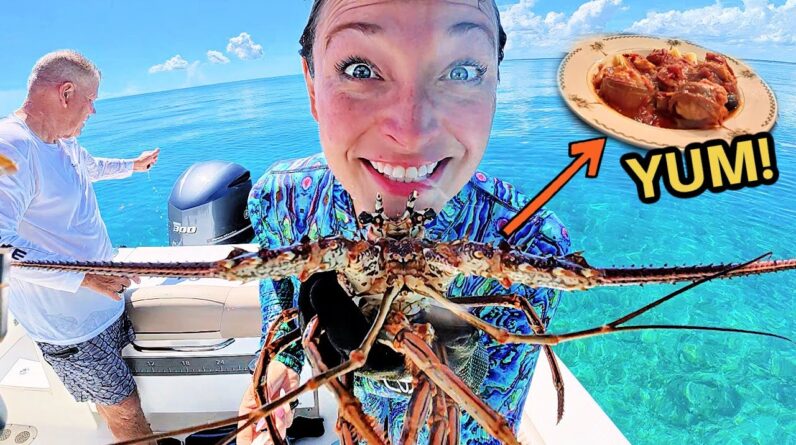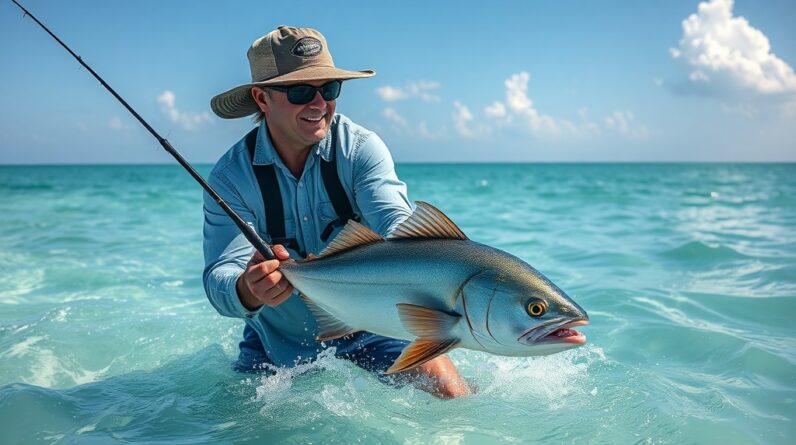
Table of Contents
Best Fishing Spots in the Florida Keys for Each Month
The Florida Keys are a fishing paradise, offering a diverse array of ecosystems and species year-round. Knowing where to cast your line each month can make a significant difference in your fishing success. Here’s a month-by-month guide to the best fishing spots in the Florida Keys that you won’t want to miss.
January
As winter settles in, the waters around Key West turn productive for anglers seeking blackfin tuna and wahoo. Head to the waters near the Dry Tortugas National Park for the highest chances of success. You can often find large schools of tuna on the surface during this time.
February
This month, the snapper bite heats up. Fish the reefs around the Atlantic side of the Keys, particularly in Key Largo. Yellowtail and mutton snapper are the main attractions, especially around the new moon when they spawn. Bring light tackle for the best results.
March
Springtime heralds the start of the tarpon season. Charter a boat to take you to the area around Islamorada, where you can find tarpon in the flats. These fish are renowned for their fighting spirit, making them a thrilling catch.
April
April is one of the best months for fishing in the Florida Keys, as mahi-mahi make their appearance. Head offshore to the waters around the Gulf Stream for a chance to reel in a trophy fish. Don’t forget to try near the floating debris, as these provide excellent ambush points for the mahi.
May
As the weather warms, so does the fishing for species like grouper. Near Key West, check out the wrecks, where the waters are abundant with black and red grouper. This is also a great month for shark fishing, especially in the waters off Islamorada.
June
In June, redfish and snook become active in the backcountry waters. The waters around the Florida Bay are prime for these catches, especially near the mangroves. Look for tidal movements to boost your chances.
July
The heat of summer brings the return of tarpon on their migration. The area around the Seven Mile Bridge is particularly productive. Use live bait or crabs to entice them from the depths of the water.
August
August continues the run for tarpon while also introducing barracuda into the mix. Fishing around the bridges and ledges can result in exciting catches. Utilize fly fishing techniques, as barracuda tend to be aggressive in the warmer water temperatures.
September
As the summer heat begins to fade, mahi-mahi are still a hot target. The waters off of Marathon are great spots for run-outs, where you can experience hot fishing action. Combine this with a chance to catch tuna, as they start to return in larger numbers.
October
October is when kingfish arrive in droves. The reefs and wrecks off Key Largo are ideal for catching these speedy fish. Fishing with live bait or using jigs can prove successful in attracting kingfish.
November
As fall sets in, it’s an excellent time for catching snapper. Head to the depths off of the reefs near Islamorada for a shot at larger sizes. Night fishing can be particularly rewarding, and the cooler temperatures make for a comfortable experience.
December
December sees a return of the larger game fish like swordfish and blackfin tuna. The waters around the Gulf Stream, just beyond the reefs near Key West, are prime areas for these specimens. Anglers should expect some thrilling action and a chance at a personal best.
With so many amazing fishing opportunities throughout the year, planning your fishing trips to the Florida Keys can lead to unforgettable experiences. Remember to check local regulations and practice sustainable fishing methods to preserve this stunning environment for future generations.
How Seasonal Changes Impact Fishing Success in the Florida Keys
Fishing in the Florida Keys can be an exhilarating experience, but it is essential to understand how seasonal changes impact fishing success. The waters of this beautiful archipelago offer a unique environment that responds differently throughout the year. Let’s explore how these changes influence fishing opportunities for anglers.
Winter (December – February)
During winter, the temperatures in the Florida Keys cool down, leading to changes in fish behavior. The water temperature typically ranges from 70°F to 75°F, making it a favorable season for several species. Here are some notable fish you can target:
- Snapper: Yellowtail and mangrove snappers are abundant.
- Shark: Great options like blacktip and bull sharks are plentiful.
- Grouper: Look for species such as red grouper.
As the weather gets cooler, fish tend to school closer to reefs and wrecks for warmth and shelter, increasing your chances of a successful catch.
Spring (March – May)
Spring brings warmer temperatures, gradually rising from 75°F to 80°F. This season is a transitional phase where fish become more active. Spawning begins, particularly for species like:
- Tarpon: These majestic fish migrate to the area and are a prized catch during this time.
- Bonefish: They become more visible in shallow waters, making for exciting flats fishing.
- Permit: This species also becomes more abundant as they gather for spawning.
With the arrival of spring, consider shallow water fishing. The action often heats up as fish move into less pressured waters for breeding, offering a variety of opportunities.
Summer (June – August)
The heat of summer raises water temperatures to between 80°F and 85°F. This season is characterized by significant rainfall, but it also creates excellent fishing conditions, especially for:
- Mahi-Mahi: The open waters become alive with Mahi-Mahi fishing.
- Snapper: Both red and lane snappers are still viable targets.
- Sailfish: As the water heats up, they migrate through the waters.
During summer, fish may seek cooler depths or structures, so don’t hesitate to explore different depths. Early mornings and late afternoons often yield the best results due to cooler temperatures.
Fall (September – November)
As the weather begins to cool again, with temperatures dropping to around 75°F to 80°F, fall is a fantastic time to fish. Many fish move around following schools of bait. Target species this season include:
- Tuna: Blackfin and yellowfin tuna are often found in abundance.
- Snapper: Again, they remain a consistent target.
- Grouper: Gag and scamp grouper become more active.
Fall also marks the start of the migration for many species, allowing anglers to catch various game fish. Keep an eye out for changing weather patterns, as they often mark prime feeding times for fish.
Understanding seasonal changes in the Florida Keys will undoubtedly enhance your fishing experience. Each season presents its unique environment and challenges, shaping the behavior of fish. By adjusting your fishing techniques to the time of year, you improve your chances of landing the big one. So, prepare accordingly and make the most of your fishing trips in this stunning region!
Tips for Catching Different Species Throughout the Year in the Keys
The Florida Keys is a fishing enthusiast’s paradise, with a diverse range of species populating its pristine waters all year round. With each month bringing unique opportunities, understanding the best times and techniques for catching various species can enhance your experience. Let’s delve into tips for maximizing your fishing trips throughout the year in the Keys.
January to March: Targeting Grouper and Snapper
During the winter months, the cold waters of the Gulf Stream pull grouper and snapper close to shore, making this an ideal time for anglers. Consider the following tips:
- Location: Focus on wrecks, reefs, and ledges where these fish like to hide.
- Technique: Use bottom fishing techniques with heavy weights to keep your bait near the bottom.
- Bait: Live bait such as pinfish, grunts, or cut bait works best.
April to June: Pursuing Tarpon and Permit
As water temperatures begin to rise, tarpon and permit become more active. These fish provide an exciting challenge for anglers.
- Location: Target the bridges, channels, and shallow flats. Look for tarpon near schools of baitfish.
- Technique: Use a light tackle setup for tarpon and a heavier setup for permit to handle their strength.
- Bait: Live crabs, shrimp, or topwater lures are particularly effective.
July to September: Enjoying Mahi-Mahi and Sailfish
Summer is the prime time for catching Mahi-Mahi and sailfish. These species are abundant in the warmer waters offshore.
- Location: Look for floating debris, weed lines, or color changes in the water, as these attract baitfish.
- Technique: Use trolling techniques with multiple lines or drift fishing for a more passive approach.
- Bait: Use bright colored lures, and live bait works incredibly well.
October to December: Targeting Blackfin Tuna and Wahoo
As fall arrives, blackfin tuna and wahoo become more prevalent in the waters around the Keys, providing anglers great opportunities.
- Location: Fish near offshore structures, current rips, and areas with schools of baitfish.
- Technique: High-speed trolling is often effective when targeting wahoo, while chunking strategies can lure blackfin tuna.
- Bait: Consider using live baits such as small tuna or lures that mimic them.
No matter what time of year you decide to fish in the Florida Keys, being prepared will make a huge difference. Here are general tips to ensure successful fishing adventures:
- Stay Informed: Always check local fishing reports and talk to local guides. They can provide timely information on where fish are biting.
- Be Patient: Fishing often requires patience. Don’t get discouraged if the fish aren’t biting right away; sometimes, waiting can yield the best results.
- Practice Catch and Release: To help maintain the environment and fish populations, consider practicing catch and release, especially for larger breeding fish.
By familiarizing yourself with the fishing seasons and techniques for different species in the Florida Keys, you’ll increase your chances of having successful and enjoyable fishing trips year-round. Happy fishing!
Essential Gear and Bait for Florida Keys Fishing Adventures
If you’re planning a fishing adventure in the Florida Keys, having the right gear and bait is essential for a successful day on the water. The Keys are home to a diverse range of fish species, from tarpon to snapper, and being prepared can make all the difference. Here’s a complete guide to essential gear and bait for your fishing trips in this beautiful tropical paradise.
Essential Fishing Gear
The right fishing gear not only increases your chances of landing a big catch but also enhances your overall experience. Here’s a list of necessary equipment you should consider taking:
- Fishing Rod and Reel: Choose a medium to heavy action rod for offshore fishing and a lighter rod for inshore. Make sure the reel has a strong drag system.
- Line: Use braided lines for strength and sensitivity. A 20-30 lb test line is ideal for most fishing in the Florida Keys.
- Baitcasting or Spinning Reel: Depending on your fishing style, a baitcasting reel gives you precision, while a spinning reel is great for beginners.
- Tackle Box: Organize your fishing tackle, including hooks, sinkers, and lures, to make fishing more efficient.
- Fishing Net: A good landing net helps you safely bring your catch aboard without damaging it.
- Cooler: Keep your catch fresh with a sturdy cooler filled with ice. This is important for maintaining the quality of your fish.
- Fishing License: Remember to obtain a fishing license specific to Florida, as it’s required for all anglers.
Bait Options for Every Type of Fishing
The bait you choose can significantly affect your chances of catching fish. The waters around the Florida Keys are rich in marine life, and various baits can attract different species. Here’s what you should consider:
- Live Bait: This is often the most effective option. Consider using:
- Pinfish
- Shrimp
- Mullet
- Menhaden
- Cut Bait: Great for bottom fishing, cut pieces of larger fish, such as:
- Northern mackerel
- Squid
- Pole fishing for snapper or grouper
- Artificial Lures: These can be versatile and come in various forms, such as:
- Soft plastics
- Jigs
- Topwater plugs
Fishing Techniques and Tips
Practicing effective fishing techniques can improve your success and enjoyment. Here are some key tips to keep in mind:
- Know the Seasons: Different species are more active at specific times of the year. For instance, tarpon are abundant in late spring, while snapper fishing is best in summer.
- Choose the Right Time of Day: Early mornings and late afternoons often yield the best results as fish tend to feed more during these cooler times.
- Be Patient: Fishing requires patience. If the fish aren’t biting, try changing your location or switching bait.
- Respect the Environment: Follow local regulations and practice catch and release to help preserve the delicate marine ecosystem.
Safety and Comfort Essentials
Being safe and comfortable while fishing in the Florida Keys is just as crucial as having the right gear. Consider these additional items:
- Sunscreen: Protect your skin from harmful UV rays, especially since you’ll be out on the water for extended periods.
- Hydration: Bring plenty of water to stay hydrated, especially in the warm Florida weather.
- Hat and Sunglasses: A wide-brimmed hat and polarized sunglasses can shield you from the sun and reduce glare on the water.
- First Aid Kit: Always carry a first aid kit for any unexpected situations.
With the right gear and bait, your fishing adventure in the Florida Keys will be both enjoyable and productive. Whether you are a seasoned angler or a novice, being well-prepared can lead to memorable catches and adventures on the water.
Local Regulations and Best Practices for Sustainable Fishing in the Keys
The Florida Keys are a paradise for fishing enthusiasts, renowned for their breathtaking scenery and abundant marine life. However, with great fishing opportunities comes a shared responsibility to protect these precious resources. Understanding local regulations and implementing sustainable practices is essential for preserving the ecosystem for future generations. By following these guidelines, you can enjoy fishing while also ensuring that the environment thrives.
Understanding Local Regulations
It’s crucial to familiarize yourself with local fishing regulations to help maintain the balance of the marine environment. These rules vary by species and location, so be sure to check the latest information from reliable sources such as the Florida Fish and Wildlife Conservation Commission (FWC). Key regulations include:
- Seasonal Restrictions: Certain fish species have designated seasons during which fishing is restricted to protect breeding populations. Always check the current seasons to avoid fines and overfishing.
- Size and Bag Limits: Each fish species has specific size and bag limits. Adhering to these rules is essential for preserving fish populations. Measure your catch and know how many you can keep.
- Protected Species: Some marine species, such as dolphins and sea turtles, are protected by law. Interacting with or keeping these species can result in severe penalties. Always report any sightings of these animals to the proper authorities.
- Permits: Certain fishing activities, such as deep-sea fishing or chartering a boat, may require specific permits. Ensure you have the correct documentation before heading out.
Best Practices for Sustainable Fishing
In addition to following local regulations, employing sustainable fishing practices can significantly reduce your impact on the marine environment. Here are some key actions you can take:
- Catch and Release: Whenever possible, practice catch and release. This technique allows fish to return to the water, helping maintain healthy populations. Use barbless hooks and handle fish gently to minimize harm.
- Use the Right Gear: Select appropriate gear to catch specific species. Using the right equipment can help reduce bycatch and minimize damage to the environment. Research gear types that are specific to your targeted species.
- Avoid Fishing in Fragile Areas: Certain habitats, like coral reefs and seagrass beds, are incredibly vulnerable to fishing activities. Stay away from these areas, and if you must fish near them, do so with care.
- Be Mindful of Waste: Dispose of trash properly and avoid leaving any waste on the shores or in the water. Pollution poses a threat to marine life, so always clean up after your fishing trips.
- Educate Yourself and Others: Share knowledge about sustainable fishing. Engage with fellow anglers to promote awareness of local regulations and the importance of protecting marine ecosystems.
Choosing Eco-Friendly Charters
If you prefer to fish on a charter boat, make sure to select an eco-friendly charter service. Look for operators who emphasize sustainable practices.
Here are some tips for choosing an environmentally responsible charter:
- Research Reputation: Check reviews and feedback from previous customers about the charter’s commitment to sustainability.
- Inquire About Practices: Ask about their fishing methods. Responsible charters should actively promote catch and release and offer gear that minimizes bycatch.
- Support Local Guides: Empathetic local operators tend to have a vested interest in protecting their fishing grounds. Supporting them helps sustain the community and environment.
Final Thoughts
Fishing in the Florida Keys is a rewarding experience, but it comes with a responsibility to maintain the beauty and health of the marine ecosystem. By understanding local regulations and adopting sustainable fishing practices, you can help ensure that future generations can enjoy the incredible resources that the Keys have to offer. Engage with the community, share your knowledge, and together we can make a positive impact on this fishing paradise.
Conclusion
The Florida Keys offer a year-round fishing paradise, with each month bringing its unique opportunities and challenges. By understanding how seasonal changes affect fish behavior, you can enhance your chances for success, whether you’re casting your line for tarpon in the summer or searching for grouper in cooler months. Tailoring your approach with specific tips for different species throughout the year ensures that you’re well-prepared to make the most of your fishing adventures.
Equipping yourself with the right gear and bait is equally important. The diverse marine life in the Keys requires a keen understanding of what works best for each type of fish. By staying informed about the local regulations and best practices, you’ll not only improve your fishing experience but also play a crucial role in preserving this stunning environment for future anglers.
As you explore the best fishing spots in the Florida Keys, remember to embrace the beauty of the surroundings and the excitement of each catch. Together, these insights serve as a guide for making every fishing trip memorable. So, pack your gear, keep these tips in mind, and prepare for some incredible adventures that await you in the fabulous Florida Keys! Happy fishing!
